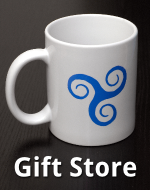How to use an atomic clock...
I saw this TV program the other day about quantum mechanics. One segment talked about the atomic clock as an example of how quantum physics has changed the way we do things. I gather that all over the world, accurate time is set to the atomic clock in Boulder, Colorado, USA.
Then the show went on to talk about a new version of the atomic clock that uses lasers and a different element, strontium 87, and is vastly more sensitive. "The new clock optimizes the previous techniques by using strontium 87 whose atoms tick at femtoseconds (1 million billion times per second)" (as put by https://www.worldatlas.com/articles/where-is-the-world-s-most-accurate-clock.html).
If you had two of these clocks at the same altitude, they would beat in sync. But if you raised one just the thickness of a human hair, thus distancing it that much from the core of the earths gravity it will beat a little faster because the weaker the gravity, the faster time flows according to Einstein's theory of relativity. So this new clock is sensitive enough to measure that minute change.
I could imagine that in a decade or two air travel and submarines might use altimeters based on these clocks. My question then is what kinds of applications could be derived from such a sensitive device. Is there a host of applications already developed that would become more accurate? Can we imagine new applications?
I guess I'm just trolling for physicists you know, or any visionaries, or maybe carpenter's wives.
I'm a budding time-nuts enthusiast, interested in accurate and precise time. I'm in the process of setting up a time server with a GPS disciplined oscillator (OCXO - oven controlled crystal oscillator) at home. The server will be independent of the Internet, will serve my computers and several clock displays throughout my apartment and will maintain accurate time if the GPS lock is lost. I'm also interested in high accuracy quartz (HAQ) wrist watches. I hope to eventually branch out to atomic timekeeping, including rubidium and cesium atomic clocks. GPS satellites carry rubidium clocks.
Good reference info:
http://www.leapsecond.com
http://www.leapsecond.com/time-nuts.htm
http://www.leapsecond.com/pages/books/
https://www.nist.gov/pml/time-and-frequency-division/general-interest-tf-publications
https://lists.ettus.com/empathy/list/time-nuts.lists.febo.com
https://www.wriley.com/Rb%20Freq%20Std%20Links.htm
https://apps.dtic.mil/sti/tr/pdf/ADA427962.pdf
Dave (formerly libredrs)
> If you had two of these clocks at the same altitude, they would beat in sync. But if you raised one just the thickness of a human hair, thus distancing it that much from the core of the earths gravity it will beat a little faster because the weaker the gravity, the faster time flows according to Einstein's theory of relativity. So this new clock is sensitive enough to measure that minute change.
https://arxiv.org/pdf/2109.12238 explains how variations in frequency were observed over atoms at a 1 millimeter distance, in one optical lattice (it is not two independent systems).
It might be feasible to evaluate how far vertically a clock is travelling by measuring the frequency shift, but if the movement can also be horizontal, when getting over mountains, there would be extra gravity slowing down the clock for the same altitude, so it might be more complicated. Perhaps the gravity of different mountains of the same size can be significantly different, if their density would be different. There could also be higher density earth areas that are not visible from the surface and impact gravity enough to alter measurements.
Trying to parse the article you linked to Avron, I came to https://www.researchgate.net/publication/304822019_Relativistic_geodesy and I this statement: "Quantum metrology enables new applications in geodesy, including relativistic geodesy. The recent progress in optical atomic clocks and in long-distance frequency transfer by optical fiber together pave the way for using measurements of the gravitational frequency redshift for geodesy." 'Optical atomic clocks' have their frequency 'seen' as "Scattered photons are collected on a camera, enabling in-situ measurement with 6 μm resolution." (Your link)
"Quantum metrology enables new applications in geodesy, including relativistic geodesy"... so one application of that could be to create a 3d image of the earth's gravitational field. If a 3d earth was placed where it belonged within its field we would be able to see the per foot champion mountains - the heavy weights. But the accumulation of ice and snow and melting of the same would always be changing the map.
I had never heard of time-nuts enthusiasts. I'm afraid I can't be one of those. When I miss an appointment or am late to church or a family get together I admit that I am very loosely affiliated with time. I marvel at your projects Dave. What's the chance you would be able to branch out to atomic time keeping while still working in your apartment?
This is fascinating stuff but I am still wondering if futuristic applications that will affect the 'man on the street (or woman)' can be imagined.
Yesterday I went to a bookstore and bought "The Order of Time" by Carlo Rovelli.
For years I have thought about a website, or service I'll call timeline.org. Criminal investigators like to build timelines showing events, first in the last 24 hours of the victim's life. As the investigation continues the scope may change to days and weeks around the event.
World historians need a much greater scope, from the beginning of time till now. But if they are primarily studying the Cambodian Holocaust they would need to zoom in to years around the time the US was involved in Viet Nam and beyond until the demise of Pol Pot. But people from all over could add their entries building a really comprehensive history of the world with the capability to zoom in from ages to mere days.
Anyway, kind of a wikipedia of time. Programming way beyond me but it might be kind of a useful deal.

